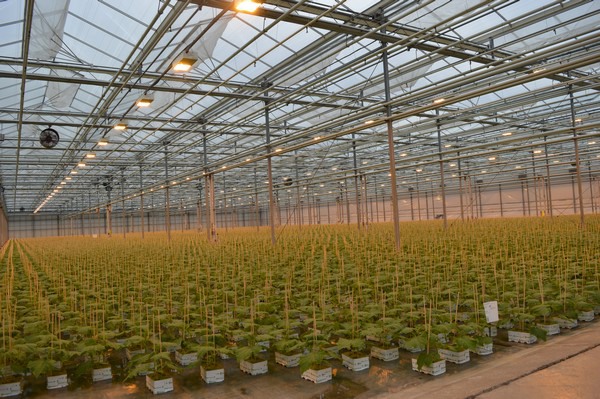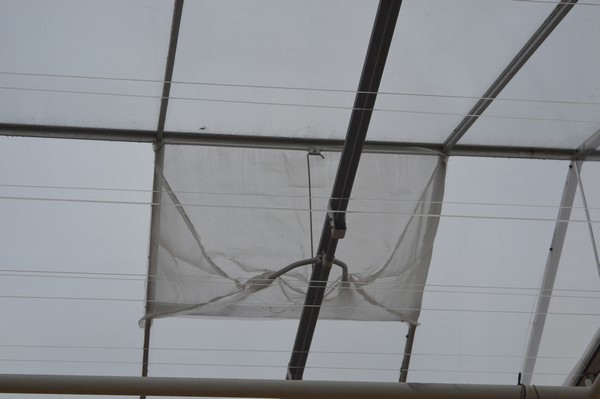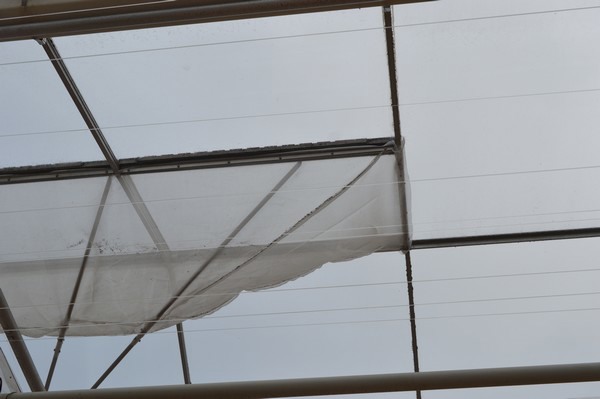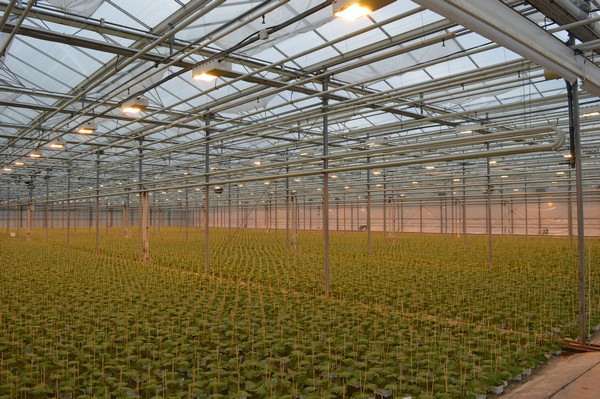Ward by ward, plant grower WPK is adding screens to its greenhouses in Made. In this way, the plant grower wants to keep out pests and diseases. With the air vents ajar, white flies or aphids usually blow in. With insect mesh filters under the air vents, Wim in 't Groen has much less trouble with that in Made.

Exactly as intended when WPK, the company of owner Erik van der Arend, knocked on SchermNed's door in 2020. "We were initially looking for a solution for in the cultivation of cucumber and pepper plants," says Wim, the cultivation manager in Made. "We gained customers from the UK. There, they are very strict with controls on whitefly. That was a reason for us to ensure clean cultivation. With mesh, we mainly want to keep out aphids and tobacco and also greenhouse whitefly."

With an insect mesh filter from SchermNed, there are no moving parts. An aluminum strip is used to attach it to the rod.
Mesh popular
Back in 2020, the first department of about 3,500 square meters was netted with mesh filters. Insect netting with a mesh size of 0.27x0.77 millimeters was chosen. Carl Stougie, sales manager at SchermNed: "This is what is chosen in 90% of the cases in greenhouse horticulture."
One summer of testing was done with departmental screening. With measuring boxes and data loggers, WPK watched what the installation of netting did to the greenhouse climate and pest pressure. In recent years, netting installation in greenhouse growing has taken off. Before then, growers were often somewhat reluctant. Growers were unfamiliar with what mesh installation would do to the greenhouse climate. "Meanwhile, in more and more crops, we see growers installing insect netting anyway," says Carl. "In gerberas and cucumbers, we see that once the first growers opted for netting, more growers followed."

Good test
Wim now knows from his own experience that the insect mesh filters under his vents in greenhouses with a leg height of 4.5 meters have hardly any effect on the greenhouse climate. "We started measuring in the first section and could compare well with the other sections. When overlaying the graphs, we saw no differences in temperature and absolute and relative humidity."
The recent hot summer was an extra good test for WPK. "This included one week with very high temperatures and little wind. That's when the climate didn't feel as good," Wim points out. "However, it was extreme, but still no reason not to install netting."
In terms of pest pressure, WPK sees a lot of difference between netted and non-netted departments, even if they are separated only by a roller gable, which occasionally goes up. "In the departments with netting, we scout much less whitefly. This makes it clear to us that a lot of it is invasion through the vents. Horizontal movement in the greenhouse seems to be much less."

The mesh filter is adjusted depending on the size of the window
Installing it yourself
Before choosing to install mesh, WPK had gone to see other growers. "We went to see production growers with cucumber and sweet pepper working with the same type of mesh. The results they saw, we are now also seeing."
The choice of insect mesh filters was easy. Carl: "For existing greenhouses, this is the best option. You also have harmonic netting, but you see that a lot in new-build greenhouses. You can fit it more easily there. In existing greenhouses, you're stuck with varying glass sizes that you have to take into account."

Carl Stougie and Wim in 't Groen. WPK works with two screens. The light was also considered when installing the insect screen. Carl: "The light reduction is limited and no more than with glass, about 15%. Besides, without mesh, if you start cracking the window open, the sun has free play, and localized burning can occur. A mesh filter under the glass can help in this case."
After the test in 2020, another department followed in 2021. There are now six, and the seventh department is on its way. At WPK, they do the installation themselves with their own people. Carl: "It's not rocket science either. We supply a manual and instructions." Wim: "We have good people and also keep a close eye on how the installation is done." Cleaning the mesh is also done in-house. Wim: "For this, we spray the dirt onto the greenhouse deck from inside. The deck washer then does the rest."
Among the production growers, the first tomato growers have now also started using insect netting, Carl knows. "We delivered the first windows here at the end of last year," he says. Wim also knows a tomato grower who is now working with insect netting. "He saw it with us and is now growing with mesh on ten hectares."
WPK itself does not yet apply it in tomato growing. "Tomatoes are grown slightly cooler, so you do need enough air exchange. For us, with the good results we are now seeing, it will eventually be worth considering in tomato growing as well."

For more information:
Carl Stougie 
SchermNed B.V.
Tel.: +31 (0)174 62 22 14
info@schermned.nl
www.schermned.nl

